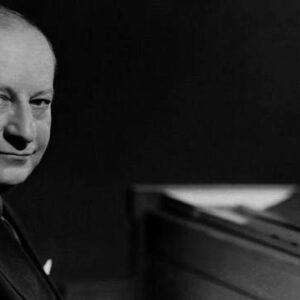Sigmund Romberg was an Austrian-Hungarian composer who was best known for his operettas and musicals. He created almost 60 pieces for musical theater, as well as music for revues and musical comedies, during the course of his long career. He showed an early interest in music and his abilities were evident when he was just a tiny boy. He began learning the violin and piano at the age of six and eight, respectively, with the assistance of his father. He was an active member of his high school symphony, and it didn’t take long for him to discover that music was his true calling. His parents had encouraged him to pursue music when he was younger, but they wanted him to eventually seek a profession in something more secure. As a result, they convinced him to pursue a career in engineering and dispatched him to Vienna for training. Instead of concentrating on his engineering education, he became engrossed in music and finally moved to the United States to pursue his dream of becoming a musician. He struggled at first to find his feet, but he finally became a well-known and famous composer. He was a pivotal role in American operetta in the early twentieth century, and with Oscar Hammerstein II, he created a new paradigm for the genre. He went on to write musical compositions for Hollywood films later on.
Childhood and Adolescence
During the Austro-Hungarian kaiserlich und königlich (Imperial and Royal) monarchy, he was born as Siegmund Rosenberg in Gross-Kanizsa on July 29, 1887. Adam and Clara Rosenberg, his parents, were both Jewish. In 1889, he and his family relocated to Belie, Hungary. He enrolled in an elementary school here.
His father was a music lover, and Sigmund began to show off his musical abilities at a young age. He began playing the violin at the age of six and the piano at the age of eight. He entered in the Osijek gymnasium in 1897 and got his secondary education there. He was a member of the school orchestra during his high school years.
He adored music and aspired to be a musician. His parents, on the other hand, wanted him to establish himself in a more solid and safe job. As a result, they persuaded him to pursue engineering and sent him to Vienna for his education.
He began studying engineering after coming in Vienna, but it did not take him long to understand that this was not the best professional route for him. During this period, he became completely absorbed in music and began taking composition courses, eventually becoming a proficient violinist and organist.
Career of Sigmund Romberg
Beginning in 1907, he served in the Hungarian Army for a brief period of 18 months. Then he made the decision to go to the United States in order to pursue his ambition of being a musician. In 1909, he emigrated to the United States. His first years in the United States were difficult. His first work was a seven-dollar-a-week position in a pencil factory.
He quickly gained the chance to play music as a pianist in cafes and bars, thanks to his talent and ambition. He rose to the position of conductor of an orchestra as a result of his hard work and tenacity, and he quickly became well-known in the musical world.
He currently devotes his time to writing music for the theatre. He wrote ‘The Whirl of the World,’ which premiered in 1914, alongside lyricist Harold Atteridge. Romberg became an American citizen in the same year. He worked with Atteridge for several years, creating plays such as ‘The Blue Paradise’ (1915) and ‘Maytime’ (1916). (1917). Romberg penned ‘Song of Love’ for the operetta ‘Blossom Time’ in 1921, and it was his biggest hit to that point.
During the late 1920s, he was at the height of his career, creating operettas like as ‘The Student Prince’ (1924), ‘The Desert Song’ (1926), and ‘The New Moon’ (1928), which became his most well-known compositions. He created the soundtracks for numerous films in his latter years, including two with Hammerstein, ‘Viennese Nights’ (1930) and ‘The Night is Young’ (1934), the latter of which contained the song ‘When I Grow Too Old to Dream.’ He also made cinematic adaptations of his own material.
Major Projects of Sigmund Romberg
One of his most popular compositions is the operetta ‘The Student Prince,’ which is based on Wilhelm Meyer-drama Förster’s ‘Old Heidelberg.’ The musical was the longest-running Broadway show of the 1920s, with 608 performances. He created the music for ‘The Desert Song,’ an operetta that lasted for 465 performances and is still a favorite work for community light opera groups. Lawrence of Arabia’s help to native insurgents was the inspiration for the operetta. ‘The New Moon,’ his final smash operetta, was his final hit operetta. The musical saw 519 performances, produced several revivals, and two film adaptations, and is still performed by light opera organizations today.
Achievements & Awards
In 1970, Romberg was elected to the Songwriters Hall of Fame.
Personal History and Legacy
Eugenia was the first woman he married. Except for the fact that she was an Austrian, which was recorded on a 1920 federal census form, little is known about her. In March 1925, he married Lillian Harris for the second time in New Jersey. The couple didn’t have any children.
On November 9, 1951, he died of a stroke and was buried at the Ferncliff Cemetery in Hartsdale, New York. He was 64 years old at the time. He was represented by José Ferrer in the Stanley Donen-directed film ‘Deep in My Heart,’ which was released in 1954. Belie has been presenting musical evenings in his honor since 1970.
Estimated Net Worth
The estimated net worth of Sigmund Romberg is $6 Million.


